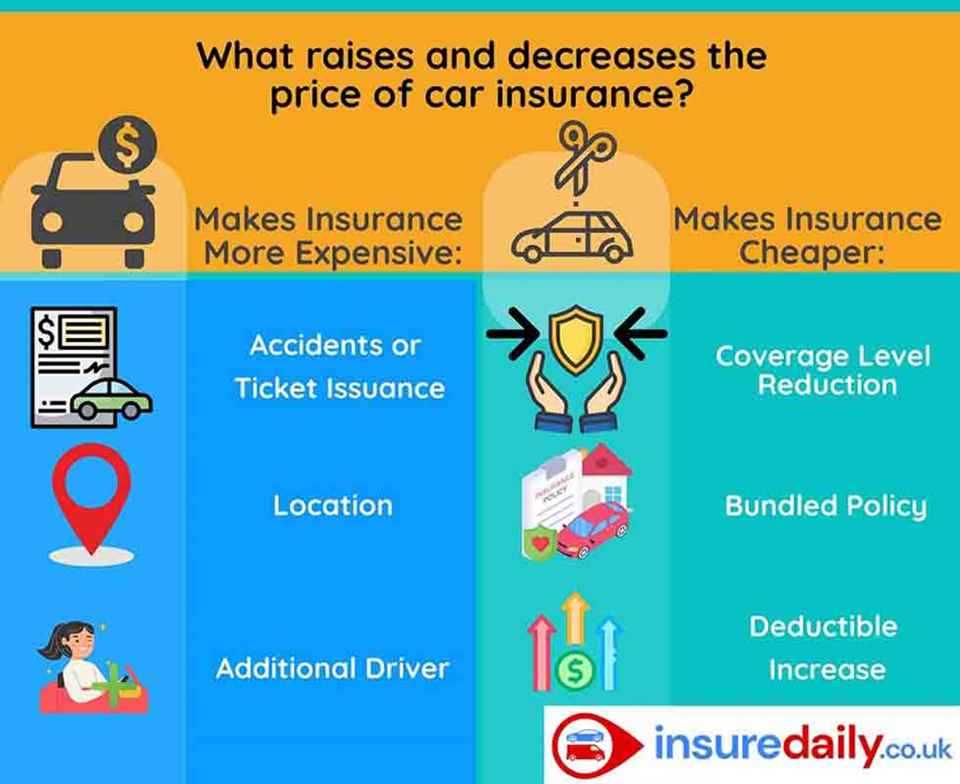

Car insurance premiums can vary widely depending on several factors. Understanding what affects your insurance premium is crucial to making informed decisions and finding ways to save on your monthly payments. From your driving record to the type of vehicle you drive, many elements play a role in determining how much you’ll pay for car insurance. In this blog, we’ll explore the key factors that influence your auto insurance rates and provide tips on how you can lower them.
One of the most significant factors affecting your insurance premium is your driving record. Insurers assess your history to determine how likely you are to be involved in an accident or file a claim. If you have a clean driving record, you are seen as a lower risk and are likely to pay less for insurance. On the other hand, if you have a history of traffic violations or accidents, your rates may increase.
How to Lower Your Premium: Maintaining a clean driving record is the best way to keep your premiums low. Consider taking a defensive driving course to reduce points on your record and demonstrate your commitment to safe driving.
The type of vehicle you drive can have a significant impact on your insurance costs. Insurers evaluate several aspects of your car when determining your premium:
How to Lower Your Premium: If you’re in the market for a new car, consider choosing a model that is affordable to insure. Additionally, installing safety features or anti-theft devices may help reduce your premium.
Where you live plays a role in your car insurance premium. If you live in an area with high traffic volume, crime rates, or a history of natural disasters, your insurance rates are likely to be higher.
How to Lower Your Premium: If you live in a high-risk area, consider moving your car to a secure garage or using anti-theft devices to lower your risk. Additionally, check with your insurer to see if they offer coverage for specific weather-related risks.
In many states, including Texas, your credit score can affect your car insurance premium. Insurers believe that individuals with higher credit scores are less likely to file claims, making them a lower risk.
How to Lower Your Premium: Maintaining a strong credit score can help reduce your insurance costs. Pay bills on time, reduce debt, and regularly check your credit score for errors.

The amount and type of coverage you select will also directly impact your premium. The more extensive the coverage, the higher your premium will be. Here are the main types of coverage to consider:
How to Lower Your Premium: While adequate coverage is important, you can reduce your premium by adjusting your coverage levels. However, be careful not to skimp on coverage to save a few dollars, as you may end up paying more in the event of a claim.
Age, gender, and the amount of experience you have behind the wheel also influence your premiums. Here’s how:
How to Lower Your Premium: Young drivers can reduce premiums by taking a driver education course or maintaining a clean driving record. Older drivers may qualify for discounts as they age and gain more experience.
Different insurance companies have different pricing models and offer varying discounts. Shopping around and comparing rates from different insurers can help you find the best deal for your needs.
How to Lower Your Premium: Get quotes from multiple insurance providers to compare rates. Don’t be afraid to ask about available discounts and look for companies with a strong reputation for customer service.

Understanding what affects your car insurance premium is key to making smarter decisions that can save you money. By considering factors like your driving history, the vehicle you drive, and the amount of coverage you select, you can better control your rates. Shop around for the best deals, maintain a clean driving record, and take advantage of discounts to keep your premiums as low as possible.
Stay proactive, review your insurance options regularly, and ensure you’re getting the best value for your car insurance needs.
